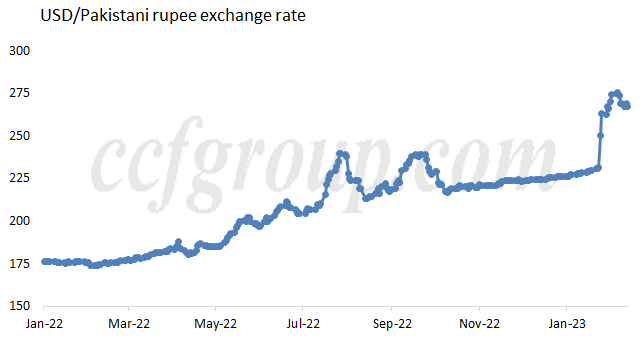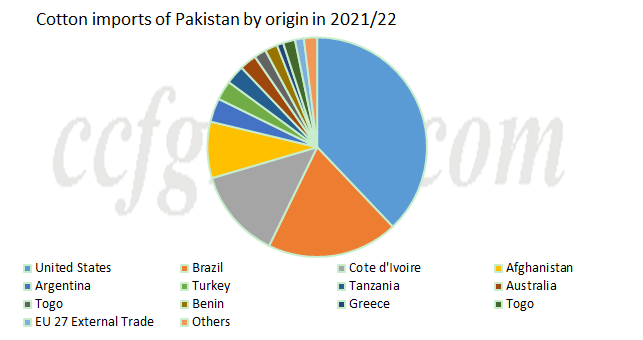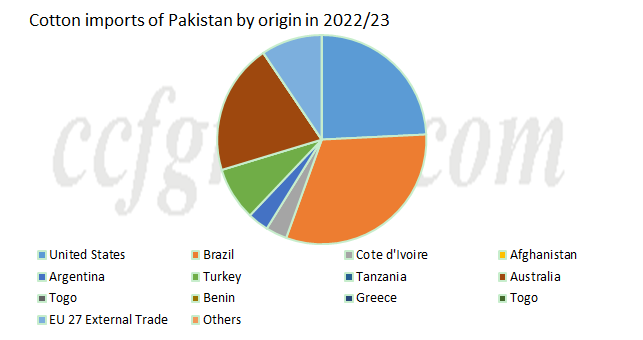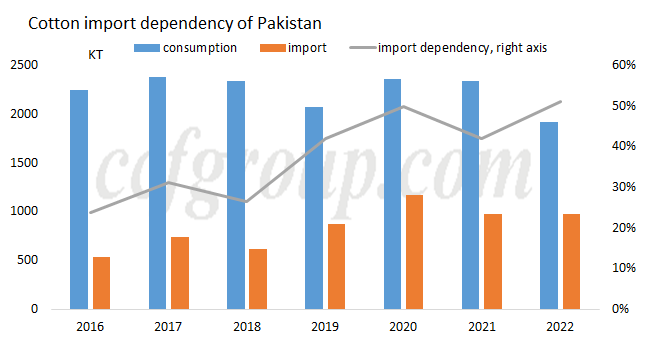On Feb 11, the official website of the Ministry of Foreign Affairs issued a reminder that Chinese citizens should be cautious about traveling to Pakistan recently. CCTV news client reported on Feb 3 that Pakistan's foreign exchange reserves have been exhausted to an extremely low level of 3.09 billion US dollars, which can only meet the import demand for 18 days. Pakistan rupee has experienced massive depreciation against the US dollar. Besides, the local food and energy has high dependence on imports. The low foreign exchange reserves and the currency deprecation triggers the worse inflation, posing severe impact on the normal life of Pakistani people, and its economic faces great challenges. As the world fourth largest cotton producer and the fifth largest cotton importer, this crisis will bring certain impact on global cotton import and export.
1. Import exchange settlement faces challenges with sharp depreciation of Rupee
Since 2022, Pakistani rupee has constantly depreciated against the US dollar after several rounds of US Fed’s hike on interest rate, and around Jan 26, 2023, the currency has depreciated by nearby 10%. Under such condition, local commodity prices moved up overall and cotton prices also increased, but with the currency depreciation and worries over the exchange settlement credit risks, imported cotton was hard to be into the market. Meanwhile, energy prices increased by nearly 112%, leading to difficult operation of downstream mills.

2. Cotton imports are active in recent two years, but there are risks on exchange settlement later
In 2022/23 season, Pakistan is active to purchase imported cotton, and import volumes increase steadily. Meanwhile, Pakistan has signed many U.S. cotton contracts in 2021/22 season, and by Feb 2, 2023, the purchases of 2022/23 U.S. cotton have reached 420kt, to be the second largest U.S. cotton export destinations, with a proportion of 19%. Export shipments to Pakistan also keep high, with a total of 156kt, but the outstanding contracts take a high share of 63%. Later, if the foreign exchange reserves shortage maintains and has no effective solutions, the exchange settlement on cotton imports will face risks. After communications with Pakistani spinners and cotton yarn traders recently, they state that imports may have some problems, as there is no available foreign exchange on settlement and exports have no problem temporarily. Recently, Pakistani cotton prices are steady, and even edge lower. In medium to short term, spinners could maintain production by consuming cotton inventory or imported cotton that is arrived previously, but later, if the foreign exchange reserves fail to improve, the forward shipments of imported cotton may face certain risks.


3. Pakistan’s cotton import dependence may be underestimated
According to USDA, cotton imports of Pakistan have risen slightly in recent years, and cotton consumption basically maintains at 2.10-2.30 million tons, though it reduces to below 2 million tons in 2022/23 affected by the flood. USD forecasts that the cotton imports in 2022/23 season are flat from 2021/22 season, and the import dependency reaches a five-year high of 51%. USDA forecasts that cotton imports of Pakistan may be 980kt in 2022/23 season, but we estimate that the imports may be higher. Pakistan has purchased 420kt of U.S. cotton, and meanwhile, Pakistan also purchases large quantity of Australian and Brazilian cotton due to their good price performance. Cotton imports are likely to reach above 1.05 million tons, and the import dependency may be higher. Of course, the cotton imports need enough foreign exchange reserves. If the subsequent shortage of foreign exchange reserves leads to abnormal settlement, then a large-scale breach of the contracts may lead to a further strengthening of local cotton prices, and at the same time, large quantity of cotton will flow to other regions, like Southeast Asia, which may suppress cotton prices in the short term.

Overall, Pakistan’s cotton textile industry has suffered tough situation in 2022/23 season. Cotton supply gap expands caused by large reduction of production, and in terms of the import dependency, the textile industry may be more urgent to import cotton in 2022/23 season. Though Pakistan has purchased large quantity of U.S. cotton previously, lots of cotton have not shipped and there is great pressure on import exchange settlement. Later, pay attention to whether Pakistan can get out of the predicament.
Πηγή: ccfgroup.com

